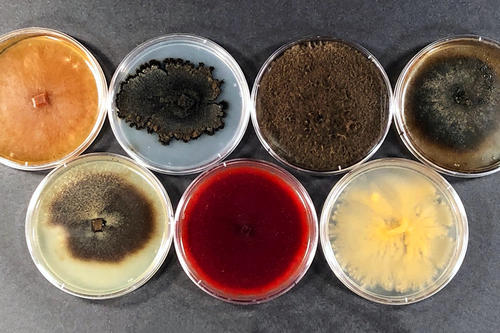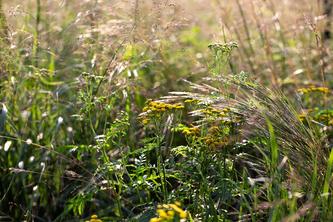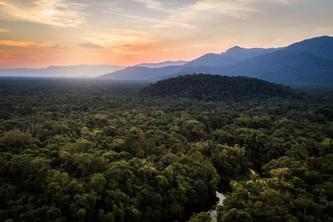
Working its way across the country, the emerald ash borer (EAB) leaves a trail of dead trees in its wake.
But it doesn’t work alone. Infected trees suffer secondary invasions when all manner of opportunistic fungi rush in to colonize the meandering tunnels—called galleries—carved out by beetle larvae.
Now, a study by U of M researcher Nickolas Rajtar and colleagues has found that of 1,126 fungal species that infect EAB-damaged ash trees, the worst culprits are those of the canker fungi group. These fungi leave telltale wounds like cracks, swellings, and discolorations.
“What we suspected and found was that canker fungi were the most abundant of all fungi isolated.” says Rajtar, a graduate student in the lab of Robert Blanchette, a professor in the Department of Plant Pathology in the College of Food, Agricultural and Natural Resource Sciences.
To find which canker fungi pose the greatest threat, Rajtar treated ash saplings with the most likely suspects and noted the degree of damage each caused. Identifying the most harmful EAB-associated fungi and understanding their genetics will give researchers a leg up in the search for new management strategies to curtail the damage.
And that’s not all
Also in Rajtar’s crosshairs are a fungus in the genus Heterobasidion that causes Heterobasidion root diesease, or HRD, and a water mold in the genus Phytophthora (Greek for “destroyer of plants).
HRD spreads through airborne spores or contacts between roots. Once it gets a foothold in a stand of trees, it is nearly impossible to get rid of. Rajtar is using biosurveillance methods to track its spread in Minnesota.
“The Wisconsin forest systems are getting hammered with Heterobasidion, and little to no action was taken when the fungus was identified in Wisconsin in the 1990s,” says Rajtar. “We want to detect it before it establishes [in Minnesota].”
Rajtar hopes also to catch Phytophthora before it can spread. So far, he has found the fungus in both nursery and forest settings.
“I grew up in Minnesota, and I want people to enjoy the forests for generations to come,” he says.





